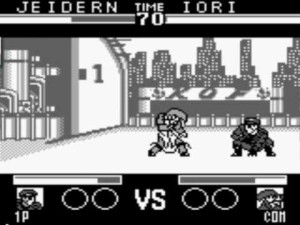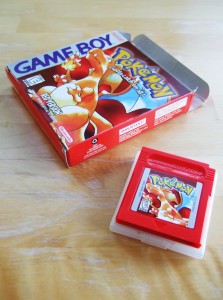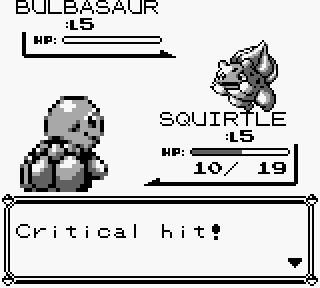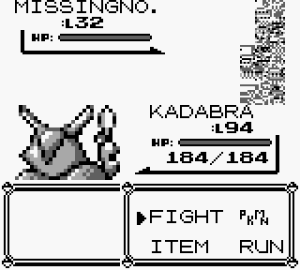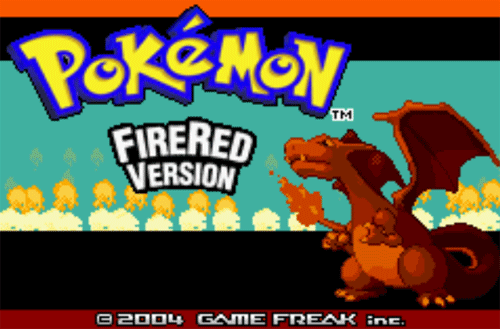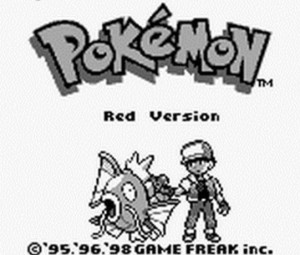Do you remember that day you received your first video game console? How about that time you discovered a secret stage that none of your friends knew about? Those days of being so excited for the latest iteration in a long-running series, only to be disappointed or have your expectations exceeded beyond your wildest dreams. That is what the Video Gamer’s Experience is all about. Now lets take a trip down this electronic memory lane.
I never owned Nintendo’s original, “fat” “Game Boy” handheld gaming system. But I did have a chance to play with one of those hulking beasts during my elementary school years. A good friend of mine used to bring his Game Boy to school whenever he had enough batteries to keep it running for at least two hours (the original Game Boy used four AA batteries). It was during that time I was exposed to “Tetris” and eventually the game that convinced me to ask my parents for my own Game Boy, “The King of Fighters ‘95”.
Conveniently enough, Nintendo decided to release a new, slimmed down version of video game’s greatest handheld device (sorry, Sega). The “Game Boy Pocket” only required two AAA batteries to function for up to ten hours and was the premier birthday present for my twelfth year. But you can’t have a Game Boy and no games play. “The King of Fighters ‘95” was the reason I asked for the system, but not the reason why I got so much play out of it or the “Pocket’s” successor, the “Game Boy Color” (featuring a color screen unlike its predecessors).
In the fall of 1998, a new animated show began airing. By the animation, it was obvious the show hailed from Japan – focusing on a young boy attempting to become a master at training things called “pokemon”. Thanks to some appropriately timed commercials, I would later find out that the show was actually based off a game of the same name. Though the animated series was okay, the thought of being a pokemon trainer intrigued me enough to convince my parents to take me to the toy store where I could use the little bit of money I saved to purchase a copy of “Pokemon”. Being that red was/is my favorite color, I chose the “Charizard” covered version over the “duller” blue cart.
Little did I, (like many other kids enjoying whatever iteration of “Pokemon” they had) know, we all were on the precipice of a pop culture phenomenon as we began our journeys to become masterful pokemon trainers.
Did I Complete “Pokemon Red/Blue”?
The trip home made waiting to play “Red” almost unbearable since we picked it up during the early evening hours and the “Game Boy Color” didn’t have a backlight like future “Game Boys” would utilize to allow gamers to play in the dark (luckily kids these days). Finally returning home, I popped in the cartridge and entered my nickname to the “Joe Every Kid” trainer; beginning my quest to become the best pokemon trainer there ever was.
The way to attain greatness was by fighting and capturing little monsters located throughout the game’s world before taking on fellow trainers (both in-game and real life if you have friends with the game and a cable to link the two). The trick to winning wasn’t having the right pokemon, but the right type. If your enemy had a “fire”-type pokemon, the best option was using a “water”-type pokemon, or a pokemon (in my case – using a “poison” type Nidorino) able to utilize water based maneuvers. While it may sound simple, the fact is without prior knowledge of your opponent’s team, it took great strategy and patience to create a formidable group of monsters to fight at your command and not fail during every battle.
But just like Ash (the lead character in the “Pokemon” animated series), I faced many hurdles along the way. I was still a novice RPG player; and the RPG mantras of “Explore everything” and “Fight everything” caused my experience to stutter more often than not. One particular, somewhat depressing memory came from the early area called “Bug Forest”. The area (as you guessed it contained a ton of bug-type pokemon) seemed excruciatingly long for the trainer who didn’t take the time out to prep his favorite creatures by fighting other pocket monsters in the grassy areas placed before entering this “never-ending” arena. Games were restarted from the last save, potions were used up, and my pokemon fainted time and time again.
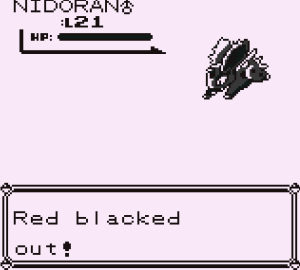
Learning from my mistakes would help me grow as a trainer and as a gamer overall. My pokemon grew exponentially, fighting off enemies, rivals and wild pokemon alike until my avatar was ready to take on the best trainers the game had to offer, “The Elite Four”. The final four trainers (five counting your in-game rival) left me feeling nostalgic for the days when the most difficult thing in the game was trying to defeat Metapod before it used its “harden” defensive maneuver too much. I would eventually overcome all challengers and be declared the champion of all pokemon trainers (in the game, not in real life of course).
While I want to write that completing a “Pokemon” game can be subjective, the truth is no one can call himself/herself a true pokemon master if they didn’t catch every pokemon possible. Sadly for me, I didn’t catch ‘em all mostly thanks to the rarity of several pocket monsters (and their toughness to catch). And the all-powerful Mewtwo (“Mr. 150”) wiped the floor with me when my pokemon confronted him (until I was my Venusaur was down to a slither of health and I utilized the “Master” pokeball). For every “Pokemon” game I can proudly proclaim that I defeated all the trainers each had to offer, but my quest to fill up my pokedex was never completed.
Did “Pokemon Red/Blue” Live Up to the Hype?
There’s a reason I owned both copies of “Pokemon Red” and “Pokemon Blue” (and not just because I was trying to “catch ‘em all”) – because the game was so much fun. The challenge of creating a formidable, versatile team intrigued me so much that not only did I replay the game on by picking up “Blue”; I actually deleted my original “Red” save to replay that one as well. That’s probably why the original games were so popular – simplicity. Both original games were easy to pick up, somewhat difficult to master, yet never left the player questioning whether or not it was worth one’s time.
Taking a page out of the previous Pacific ocean-cross phenomenon “Tamagotchi”, the “Pokemon” games looked to give the player a sense of responsibility in raising little electronic creatures. The training, if done right, not only empowered the pokemon being utilized, but also the player/trainer as he or she marched closer and closer to the elusive prize of being a pokemon training master. It was a great marketing ploy, yes, but the “Pokemon” games changed video games as a whole and brought forth an entire different generation of gamers that helped make handheld/mobile game what it is today. Yet, “Red” and “Blue” are not flawless.
One of the biggest problems with the original “Pokemon” games was its programming when it came to the “psychic”-type pokemon. The psychic type pokemon were, easily, the most powerful beings that existed in the “Pokemon” universe. The only weakness psychic-type pokemon had was against bug-type and ghost-type monster. Sadly for the players who looked to decimate psychic type pokemon found themselves in a bad way. Bug-types were so weak that many a trainer ditched them barely a quarter way into the game (with psychic-type pokemon showing up around the halfway mark). Even worse was the ghost-type pokemon being given a poison-type sub-trait. And guess what, psychic attacks were double powerful against poison-type pokemon; making the ghost-type pokemon practically useless against the main reason they were created.
Another longstanding problem with the original game was glitches. Before game-breaking glitches were easily revealed on Youtube, gamers traded horror/funny stories about the glitches they encountered. For yours truly, the game crashing during battles wasn’t out of the norm. Throw a “Gameshark” into the mix, and the game became the glitch-tastic masterpiece of either frustrating or enlightening moments. (MissingNo, anyone?) At times “Red” & “Blue” were problematic not because of the game’s difficulty, but the difficulty in figuring out if today would be one of those days where no progression could be had.
Should You Play “Pokemon Red/Blue”?
As you’d expect from the first in a long-running series, “Pokemon Red/Blue” was drastically improved upon three years after the first game was released. “Pokemon Gold/Silver” featured a completely different world, the option to play as a male or female trainer, better graphics, a slightly expanded battle system, and, of course, more pocket monsters to catch (100 more to be exact). Even better is the fact the original games have been re-imaged since their releases during the mid 1990s. In 2004, “Pokemon FireRed” and “Pokemon LeafGreen” were released for the world to experience the original iterations while keeping the graphics, game play and even some of the locales from the series’ third generation of games – “Ruby” and “Sapphire” – and fixing some of the problems from the original iterations (like the main character having the ability to run and that whole “psychic rules all” situation).
Just like many “Pokemon” games before them, the remakes were successes, and one of the best ways to experience where it all began without being constrained by the original games’ limitations. Or you can dive even deeper and play the most recent releases. No matter what version you play, a “Pokemon” game is fun and exciting as it is addicting and somewhat challenging. The “Pokemon” series ranks high as one of handheld gaming’s greatest achievements, and there’s no reason a real gamer should miss out on the chance of playing at least one generation of “Pokemon”. For yours truly, it doesn’t get any better than where it all began.


